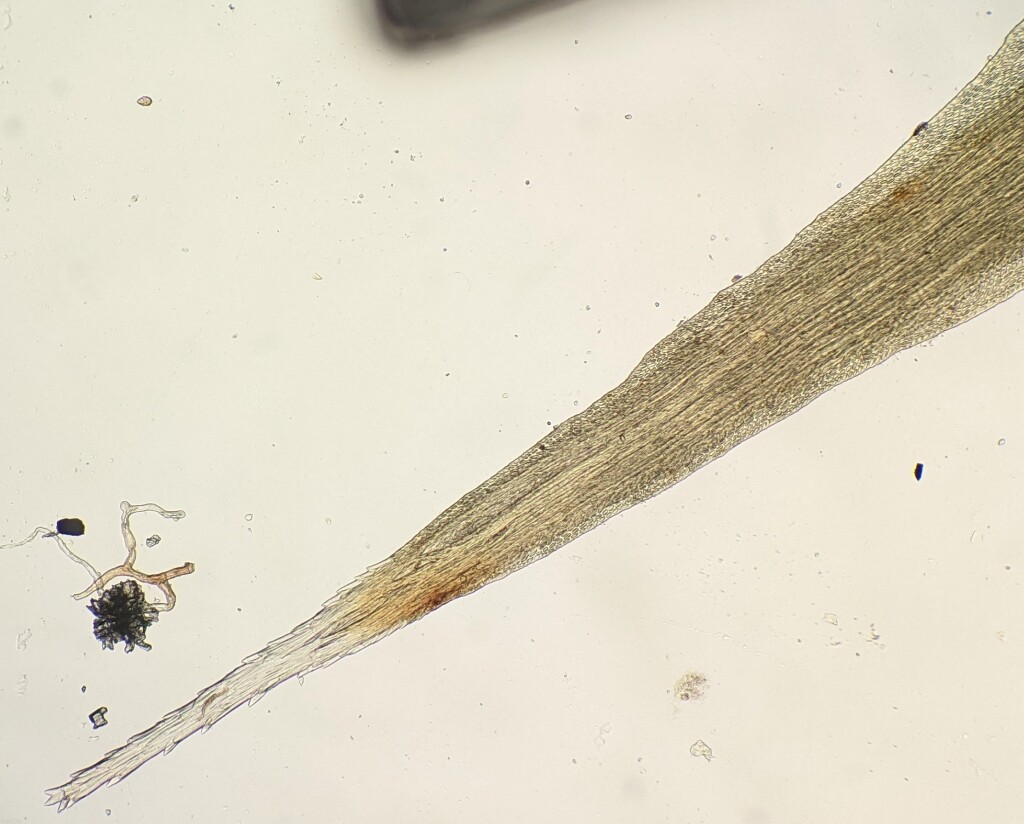Campylopus catarractilis
(Müll.Hal.) ParisDioicous. Yellowish green to green. Stems to c. 3.5 cm long, uniformly foliate, red-brown, with red rhizoids, particularly toward base. Leaves slightly curved and homomallous when moist, appressed to erecto-patent when dry, narrowly ovate-lanceolate, 3.8–4.6 mm long, 0.6–0.7 mm wide; apex ending in a short hyaline point or hyaline point absent; costa occupying c. 1/2–3/4 leaf width; margins entire, plane; laminal cells in apical half rounded-rhomboidal to ± quadrate, isodiametric or oblong, 12–25 μm long, 6–18 μm wide, not pitted; basal laminal cells oblong or rectangular, 7–50 μm long, 4–20 μm wide, hyaline throughout including above alar region; alar cells elliptic, 20–55 μm long, 6–20 μm wide, well demarcated, orange, unistratose. Sporophyte unknown.
Gold, GGr, HSF. Southern Africa and Madagascar. Recorded in Victoria from the Grampians, near Wedderburn, and Walhalla among dry sclerophyll forest, rock outcrops and beside streams but likely to be more common than records suggest.
 Spinning
SpinningKlazenga, N. (2012). Australian Mosses Online. 35. Leucobryaceae: Campylopus. http://www.anbg.gov.au/abrs/Mosses_online/Leucobryaceae_Campylopus.pdf.

